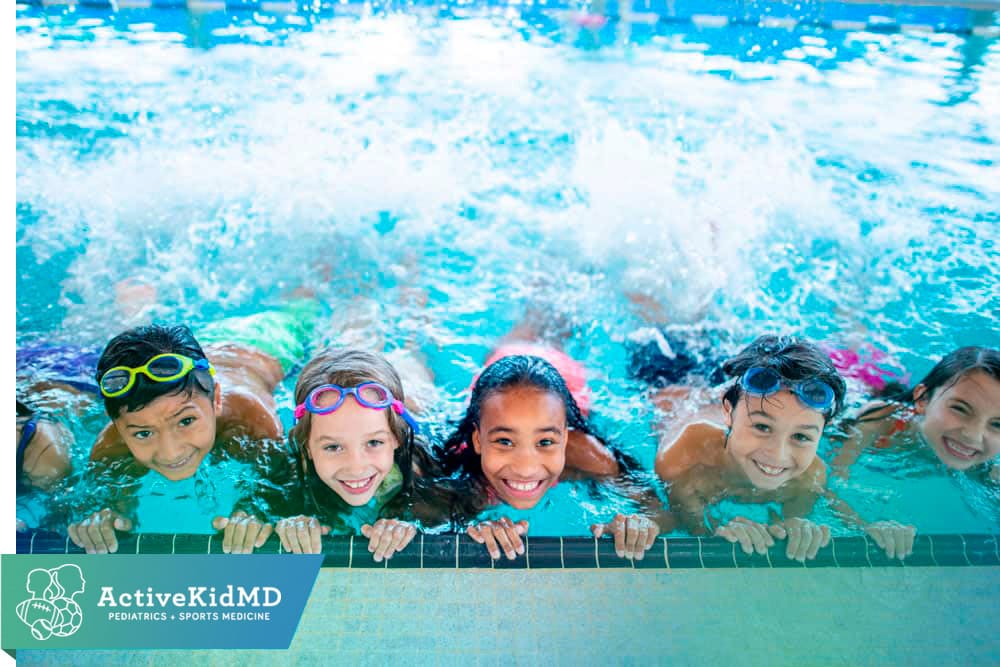Summer is here, and that means more time spent outside in the pool.
Pool safety is extremely important. Drowning is the number one cause of accidental death in children between ages 1-4 years old. It’s quick, and it’s silent. Here are some tips on keeping your child safe:
- Never—even for a moment—leave young children alone or in the care of another child while in or near bathtubs, pools, spas, wading pools, irrigation ditches, ponds, or other standing water. During swim times, designate a “Water Watcher” – an adult who will stay within arm’s reach of children in the water.
- Place a pool fence completely around the pool or spa, isolating it from the house and not attaching it to the house. Children can climb out windows, through a doggy door, and easily slip out of an unlocked back door and into the backyard unattended.
- Fencing should also have nothing alongside it, like patio furniture, that they can climb up and over.
- The fencing should be at least 4 feet high and have no footholds for kids to climb.
- Have a self-closing and self-locking gate with a handle at least 54 inches from the bottom of the gate.
- Pool alarms are good, but a fence and monitoring are the most important preventions.
- Anyone with a pool should learn CPR.
What about swim lessons?

Signs of swimming class readiness include frequency of exposure to water, emotional maturity, and physical maturity. Additionally, regarding swim classes:
- For kids younger than 3, parents should be participating with the child and limiting time with their head submerged under water
- Floaties are great, but can give kids a false sense of security and do not guarantee pool safety
- Classes should be taught by certified teachers and be fun
- Some programs claim to teach water survival skills less than 12 months old. Beware of these claims.There is no evidence that it is effective in preventing drowning.
And remember, even with swim lessons, other drowning prevention measures like a pool fence are still needed!
Little kids are curious, and that’s a wonderful thing! Nurture their curiosity AND make sure they stay safe by keeping them within arm’s reach at all times whenever you’re around water. But remember, water safety is not just about pools! Kids can drown in as little as 1 inch of water. Installing bathroom door locks and toilet latches, and emptying all buckets, pools and tubs helps keep curious little ones safe.
When it comes to water safety, be a good role model for your teen! That means always wearing life jackets when boating, teaching your child to never swim alone, and making sure your teen understands how using alcohol and drugs increases the risk of drowning.


